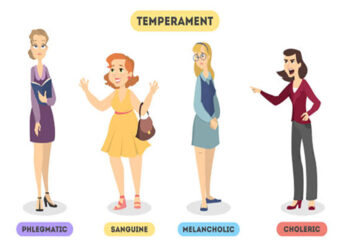Is thick, fast-growing hair a hassle for you? Are you disappointed with traditional hair removal practices and the results they offer? Here is a gift for you.
Hirsutism or excessive hair growth is not a particularly common occurrence. It is a condition where a woman has thick, dark hair on her face, neck, chest, tummy, lower back, buttocks or thighs or other areas of the body where thick hair growth is not expected.
Males usually have hair normally on most parts of their bodies and that is not described as hirsutism. Hirsutism is therefore described in terms of finding thick hair growth in parts of the body where such hair density is not expected.
Hirusitism/excessive hair growth in women can be caused by a number of factors all of which are related to an increase in the amount of or sensitivity to the hormones called androgens, which are normally elevated in males than in females. Below are some causes of excessive hair growth in women:
- Polycystic ovary syndrome (PCOS) – The most common cause
- Certain medications
- Anabolic steroids use
- Hormone-producing conditions e.g, Cushing’s syndrome and acromegaly
- Hormone-producing tumours e.g, adrenal tumours
- It could also be normally inherited in families
Excessive hair growth may not be associated with significant morbidity or serious medical state, but this can be aesthetically unappealing to observers. Young women who have thick hair growth on their face and body and other unexpected areas would stop at nothing less to get rid of the excess hair and bring out their feminine beauty.
Now, what are some ways you can treat or handle hirsutism? There are quite a handful of methods.
Treatment Options For Hirsutism/Excessive Hair Growth
The first thing that should be checked when a woman noted excessive hair growth is to exclude any use of medications or steroids that may predispose to androgens production and in-turn, development of hirsutism.
If no medication or steroid is identified, it may be wise to visit the doctor for expert care, especially when considering the fact that polycystic ovary syndrome (PCOS) is a cause of hirsutism in women. PCOS may be asymptomatic but it may affect menstruation, fertility, and may cause significant abdominal pain in severe cases. Identification of PCOS usually involves doing some blood tests and an abdominal ultrasound scan.
Your doctor may also recommend the following:
- Losing weight if you’re overweight – is linked to PCOS and elevated hormone levels
- Shaving, waxing, plucking, hair removal creams or bleaching
- A prescription cream to slow hair growth on your face (eflornithine cream)
- Contraceptive pill – this can help control hormone levels
More Direct Ways of Treatment
In this category, there are two main treatment modalities for hirsutism:
- Electrolysis – where an electric current is used to stop your hair growth
- Laser hair removal
For the sake of this article, I will further discuss the laser hair removal technique in the following sections and the steps involved.
Laser Hair Removal
Laser hair removal is a popular procedure that can help reduce the growth rate of unwanted hair. The technique involves using a laser that emits concentrated light beams onto the targeted skin area. The light beams penetrate deep and are absorbed into the hair follicles, consequently disrupting or delaying future hair growth.
Traditional hair removal techniques like shaving, plucking or waxing are associated with skin irritation, ingrown hairs, and sensitivity. These problems are less experienced in laser hair removal. In addition, laser hair removal can be performed on almost all parts of the body e.g, arms, legs, underarms, lip, chin, neck, stomach, and knuckles, among others, which may be inaccessible during traditional hair removal techniques.
Laser hair removal has become one of the most commonly done cosmetic procedures in the United States. The global laser market for hair removal was valued at $443.84 million in 2020. This market is expected to grow at a CAGR of 20.6% from 2021 to 2028, making laser hair removal techniques very lucrative as well.
Laser Hair Removal Procedure
The laser hair removal procedure involves applying laser light from a laser light-emitting device by a specialist practitioner onto your skin.
It would be best to find a qualified and licensed practitioner for the hair removal process. Your practitioner will discuss the concern areas with you, as well as the risks and benefits associated with the procedure.
You will be thoroughly evaluated, your medical history and information about the causes of your excessive hairiness will be obtained to rule out other preventable causes. After these, you will then go through the preparatory period.
The Preparatory Period
Before your appointment for the procedure, these are some precautions you should take;
- Avoid extended sun exposure on the target skin area for a minimum of two weeks.
- You can shave 12 to 24 hours before the session, but not later. This will make it easier for the laser to find the hair follicles.
- Do not wax the area as the technique can temporarily remove the hair follicles.
The Procedure
During the immediate pre-procedure period, the doctor will determine the appropriate laser and frequency for your hair type and concern area. The nurses might apply a cooling gel on the area(s) to protect your skin from any side effects.
Then, the doctor manipulates the laser device over your skin. During these movements of the device on your skin, you might feel a rubber band snapping sensation on your skin. This is normal but you can apply ice packs to the laser-treated area(s) to reduce any further discomfort after the procedure.
Your body parts like bikini lines or underarms will be more sensitive than your hands or legs and will be easier to work on. However, the overall session time will vary depending on the area to be covered.
For effectiveness and optimal results, your doctor might recommend anywhere from 9 to 12 laser sessions. Depending on your hair’s growth cycle, these sessions can be scheduled 6 to 8 weeks apart.
Following the procedure, you will be counselled on the after-care tips to reduce the side effects as much as possible. One of the commonest side effects is sensitivity and redness of the skin immediately after the procedure.
Let’s now see the aftercare/after-procedure precautions to observe.
Aftercare Tips After Laser Hair Removal Treatment
It is common to notice redness and minimal sensitivity a few hours after the laser hair removal treatment. This can be alleviated by applying cold compresses on the treated area(s).
When going out, you should ensure that you have sunscreen on if the procedure was done on your face, or cover up the area as much as possible. In addition, you should avoid sun tanning for as long as your doctor would recommend.
If you still have more laser hair removal sessions, it will be helpful if you stick to your schedules. Consistently attend your laser hair treatment sessions for long-lasting and optimal results.
In case of any other serious symptoms, be sure to contact your doctor immediately.
Conclusion
This is all for laser hair removal treatment for now. As a growing hair reduction technology, laser hair removal is becoming more popular as a safe and effective method of reducing hair growth, especially among ladies.

















